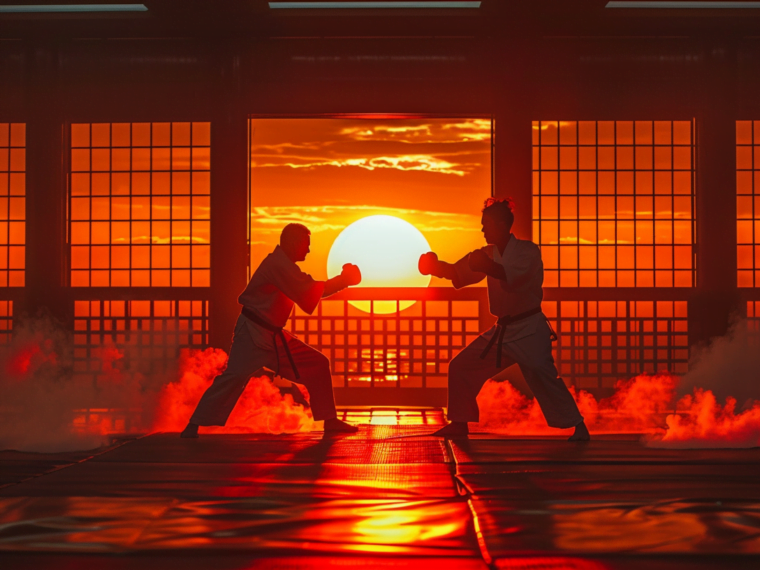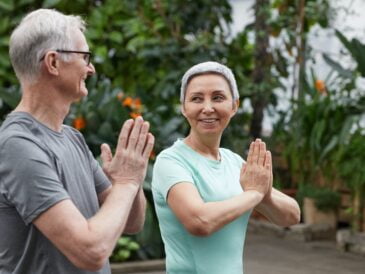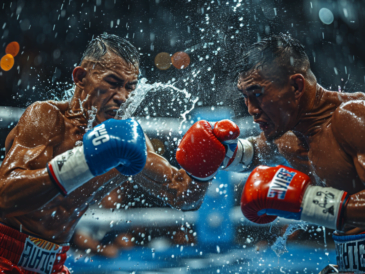Key points
• Historical Roots in Asia: Kickboxing has its origins in various martial arts from Asia, particularly from Muay Thai in Thailand and traditional Karate in Japan. It evolved as a blend of these disciplines, incorporating punches, kicks, and other striking techniques.
• Development in Japan and the United States: The sport formally took shape in the 1960s, with Japan being pivotal in its development and popularization. It later gained significant traction in the United States, where it was further modified and popularized throughout the 1970s.
• Global Expansion and Recognition: From its Asian roots and development in Japan and the United States, kickboxing has grown into a globally recognized sport. It has spawned various styles and organizations, contributing to its diversity and international appeal.
[toc]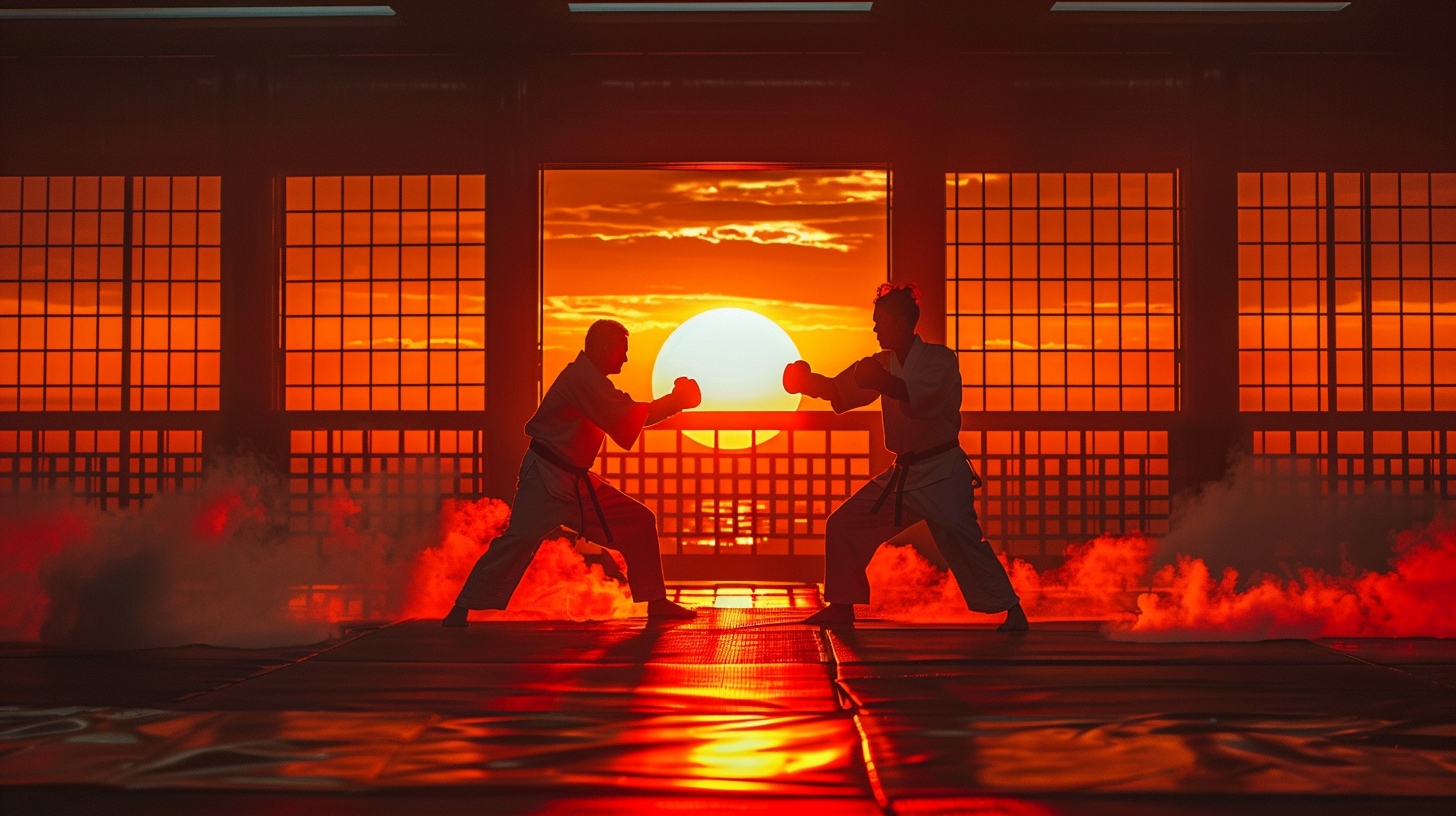
Overview of Martial Arts History
Martial arts come from many corners of the globe, each developing for self-protection, military applications, or spiritual growth. These ancient practices are the foundation of today’s martial arts.
The Emergence of Modern Combat Sports
Modern combat sports have become popular lately. Take kickboxing—it mixes moves from boxing and karate to create a sport that’s both strategic and full of action. This shows how martial arts can change, fitting new times while keeping old traditions alive.
Kickboxing didn’t just pop up overnight; it’s been influenced by many traditional martial arts over time. These older styles have given kickboxing its unique makeup, making it strong for competition and defense.
Early influences from traditional martial arts
The story of kickboxing is one of slow growth. It’s picked up pieces from various martial arts that came from different places. These early sources have shaped kickboxing into the diverse and complex form we know today.
Cross-cultural exchanges in martial arts practices
The spread of kickboxing also got a boost from different cultures sharing their moves. Whether through trade, battles, or meetings between leaders, they mixed their martial arts methods. This mixing improved current forms and helped fresh styles like kickboxing come to be. Such sharing turned simple fight moves into organized and disciplined systems.
In ‘A Killing Art: The Untold History of Tae Kwon Do,’ there’s a detailed look at how kickboxing started and grew into what it is now. It tells the gripping tale of how Tae Kwon Do went from a way to defend oneself to a sport loved all over the world.
Tae Kwon Do: A Parallel Journey
The history of Tae Kwon Do runs side by side with some major moments in history. While nations battled and individuals fought for liberty, this martial art boomed and changed with the times. It reflects our personal and collective battles, teaching us about being strong, tough, and aiming for greatness.
Foundation and Evolution of Tae Kwon Do
While Tae Kwon Do’s ancient roots go way back, it started to really take shape in the 1900s. Some forward-thinking folks blended traditional Korean fighting styles with stuff from other countries’ martial arts. As years passed, it leveled up to an Olympic sport and now millions love it for fun or fitness. This just goes to show how lively and interesting this sport is.
Historical Figures and Their Impact on Martial Arts
There’s been some stand-out people who’ve stamped their influence all over martial arts thanks to Tae Kwon Do. Their hard work and fresh ideas upgraded how people train, think about, and compete in martial arts worldwide. These pioneers have proven that it’s not just about scrapping; it’s a lifestyle.
Kickboxing has roots that can be tracked down to a mix of age-old martial arts, which turned into its own separate sport. This story goes from old-school methods to today’s sports competitions, showing us how fighting styles transformed into what we see in sports tournaments now. In the book ‘A Killing Art: The Untold History of Tae Kwon Do’, you’ll get the inside scoop on the huge part Tae Kwon Do played in kickboxing coming onto the scene.
The Birth of Kickboxing
As fighters mixed different martial arts together, kickboxing was born. They took old-school moves and added new, flexible ones to make fights more fun to watch and do. This combination didn’t happen fast – it was slow but sure, driven by the goal to make a sport that kept fans on the edge of their seats.
Switching from Old-School Martial Arts to Kickboxing
Martial artists began to try new things as they moved away from old martial arts to kickboxing. They picked the best parts of every style and mixed them to create a new way of fighting. This change showed a shift to being more flexible and practical in fights, leaving behind the strict rules of the old ways.
Important People and Moments in Kickboxing’s Growth
Kickboxing has been shaped by a variety of key individuals and significant events. Martial artists who were willing to try new things, promoters who recognized the promise of a fresh sport, and competitors who challenged the boundaries in the ring all had a hand in this growth. Their dedication turned kickboxing from its mixed beginnings into a sport that’s now respected and practiced worldwide.
Exploring kickboxing’s origins reveals a deep history influenced by many Asian martial arts. The mix of styles has made kickboxing what it is today. The background of kickboxing was also affected by the social and political climates of the times. Each region brought its own martial arts style to the table, leaving their mark on the diverse sport of kickboxing.
Asian Martial Arts’ Contribution to Kickboxing
Kickboxing began with strong ties to traditional Asian martial arts. Contributions from activities like Tae Kwon Do helped build kickboxing’s base. This exchange has made kickboxing not just technically better but also given it a depth that goes well past just fighting.
The Impact of Western Boxing on Kickboxing
Beyond Asian martial arts, Western boxing has also deeply influenced kickboxing’s skills and game plans. Boxing’s sharp jabs, nimble moving, and tactical evasion have been added to kickboxing, making it more effective and popular. This combination of East and West fighting techniques has made for a lively and evolving sport.
The book ‘A Killing Art: The Untold History of Tae Kwon Do’ dives into kickboxing’s complicated origins. The sport comes from a long history connected with Tae Kwon Do, an old and storied martial art. This connection shows how combat styles change over time by taking parts from one another and transforming into something vibrant and changing. Kickboxing’s move from traditional martial arts to its current form demonstrates how combat sports can change and prosper through the ages.
Global Expansion
From its Asian roots, kickboxing spread slowly to the West. It’s a tale of cultures mingling and changing. The sport didn’t just suddenly become popular in the Western world; it picked up steam throughout the later 1900s. This rise in interest didn’t happen suddenly; instead, the martial arts craze inspired a steady curiosity about kickboxing. Folks grew keen on the techniques, agility, and strength needed for the sport. As this curiosity turned into enthusiasm, more fitness centers and gyms started to offer kickboxing classes, making the sport even more widespread outside its native region.
The Spread of Kickboxing from Asia to the West
Kickboxing jumped from Asia to the West largely due to people moving around the globe and taking their cultural habits, like martial arts, with them. In Western countries, what started as mere curiosity in these exotic combat styles soon grew into real enthusiasm. This set the stage for kickboxing’s popularity. But it was more than just swapping blows; it was about exchanging cultural values and building respect between people.
The Role of Media and International Competitions
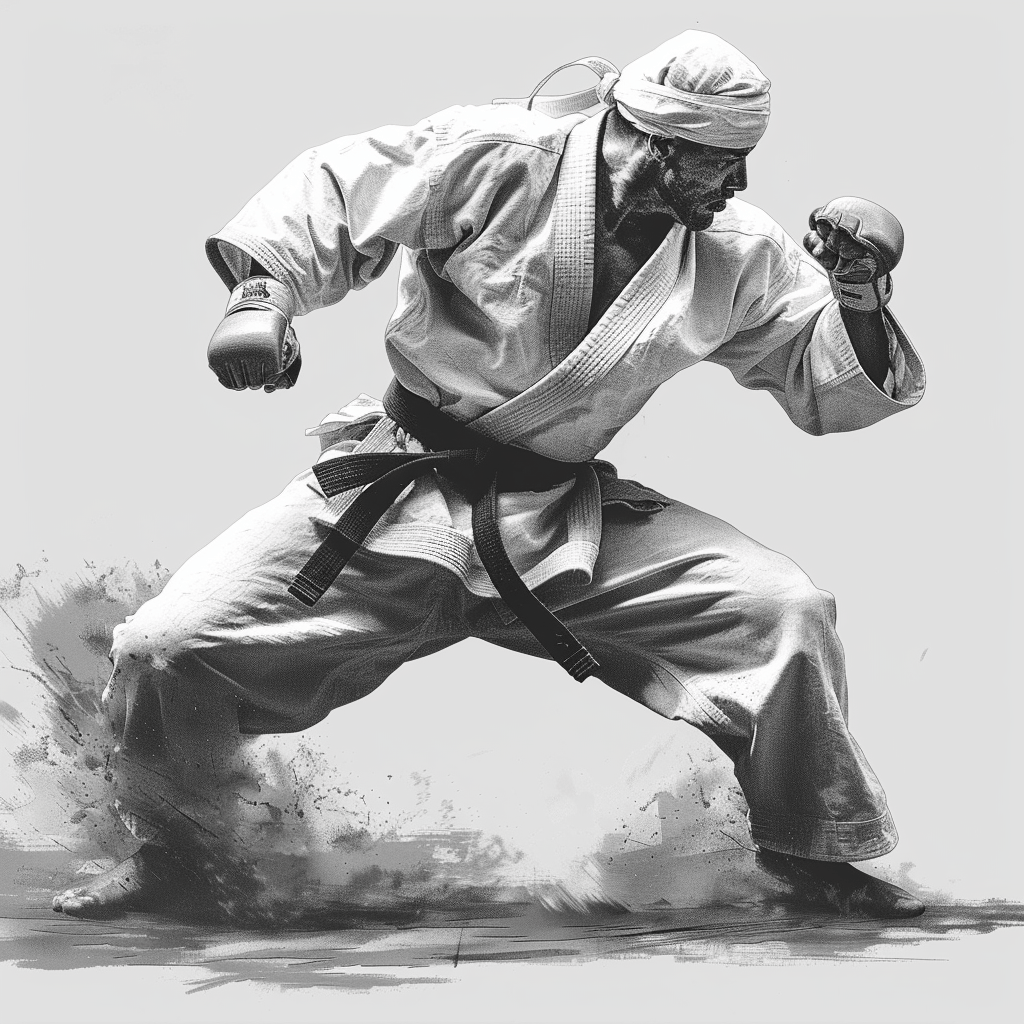
The media and international tournaments have been key in making kickboxing famous worldwide. Movies and TV programs that showed kickboxing matches fascinated many people, making kickboxing well-known. On top of that, global competitions brought together the top fighters from various countries, turning them into stars and motivating the audience. These events played a big role in spreading the word about kickboxing, crossing over countries and languages, bringing folks together because they all enjoyed the sport.
Evolution of Kickboxing from ‘A Killing Art: The Untold History of Tae Kwon Do’
Kickboxing has strong ties to the history of Tae Kwon Do, which is thoroughly discussed in ‘A Killing Art: The Untold History of Tae Kwon Do’. This martial art blends Korean combat methods with ideas and methods from various arts. It was crucial in forming today’s kickboxing.
Modern Kickboxing
Kickboxing today is an exciting blend of different styles and rules, changing quite a bit depending on where you’re at. It’s so diverse because it pulls from various fighting arts, like Tae Kwon Do. There are kickboxing matches that focus on the skill and the form and others that are all about hard hits and getting big crowds excited. Basically, kickboxing offers something for all sorts of fight fans.
Variety of Styles and Rules
As time’s gone by, kickboxing has grown to include loads of fighting styles and sets of rules. Now it’s a sport played around the world. This change comes from mixing up different fighting traditions and people in the game being open to new ways of doing things.
Tae Kwon Do’s Role and Other Martial Arts
Tae Kwon Do’s had a huge impact on kickboxing. Its moves, the ways it thinks about fights, and its basic principles are now big parts of how people train and fight in kickboxing. Especially, Tae Kwon Do is known for strong kicks and moving fast, which have changed how some kickboxing moves look. And it’s not just Tae Kwon Do – other martial arts have added their own spice to kickboxing, making it a sport rich in technique but also united in trying to be top-notch in fitness and strength.
Frequently Asked Questions (FAQ)
[lightweight-accordion title=”How has Muay Thai influenced modern kickboxing?”]Muay Thai, also known as Thai boxing, has had a significant influence on modern kickboxing by contributing its unique striking and clinching techniques. This martial art from Thailand blends powerful kicks, elbows, knees, and clinch fighting, adding a level of versatility and depth to kickboxing. Many kickboxers incorporate Muay Thai techniques to enhance their fighting arsenal, reflecting its popularity and effectiveness.[/lightweight-accordion][lightweight-accordion title=”What makes Manchester Karate and Martial Arts schools stand out?”]Manchester Karate and Martial Arts schools stand out due to their comprehensive programs that cater to all ages. These schools not only focus on karate but also include elements of various martial arts disciplines, offering a holistic approach to self-defense and fitness. Their emphasis on practical skills, mental conditioning, and the inclusion of both traditional and contemporary martial arts practices attract a wide range of practitioners.[/lightweight-accordion][lightweight-accordion title=”Can you provide information about the formation of the first kickboxing organization by Tatsuo Yamada and Osamu Noguchi?”]Tatsuo Yamada, a karate expert, and boxing promoter Osamu Noguchi formed the first kickboxing organization in Japan in the 1960s. They aimed to create a combat system that combined the striking techniques of Muay Thai with the movements and agility found in karate. This fusion marked the birth of kickboxing as a distinct martial art form, bridging the gap between traditional Eastern fighting styles and Western boxing principles.[/lightweight-accordion][lightweight-accordion title=”What role does Gracie Jiu Jitsu play in complementing kickboxing skills?”]Gracie Jiu Jitsu plays a crucial role in complementing kickboxing skills by adding ground fighting techniques to a kickboxer’s repertoire. While kickboxing focuses on striking and standing combat, Gracie Jiu Jitsu covers aspects of self-defense and combat in ground scenarios. The integration of these disciplines enables fighters to be well-rounded, preparing them for a variety of situations in mixed martial arts (MMA) competitions.[/lightweight-accordion][lightweight-accordion title=”Why has Muay Thai Boxing gained such widespread popularity across the globe?”]Muay Thai Boxing has gained widespread popularity across the globe because it’s seen as an effective and powerful form of striking martial art. Its utilization of the body’s natural weapons—fists, elbows, knees, and shins—along with its rigorous training regimen, appeals to practitioners seeking a challenging and comprehensive fighting technique. The sport’s thrilling nature and success in competitions have also contributed to its international appeal.[/lightweight-accordion][lightweight-accordion title=”What are the key differences between Japanese kickboxing and its Western counterparts?”]Japanese kickboxing tends to emphasize speed, agility, and technique, incorporating a variety of kicking and punching combinations derived from karate and other martial arts. In contrast, Western kickboxing often focuses more on power and endurance, with a strong influence from Western boxing’s punching techniques. Additionally, Japanese kickboxing includes elements of traditional martial arts culture and respect not always emphasized in Western styles.[/lightweight-accordion][lightweight-accordion title=”How does participating in kickboxing fitness programs benefit individuals?”]Participating in kickboxing fitness programs benefits individuals by improving their physical health, enhancing cardio fitness, building strength, and boosting flexibility. Moreover, it’s an effective way to relieve stress, increase self-esteem, and develop self-defense skills. The dynamic movements and intense workouts also make it an enjoyable form of exercise that keeps practitioners engaged and motivated.[/lightweight-accordion][lightweight-accordion title=”How did the K-1 organization contribute to the global spread of kickboxing?”]The K-1 organization played a pivotal role in the global spread of kickboxing by organizing high-profile international competitions that attracted top fighters from around the world. Established in Japan, K-1’s events showcased the excitement and intensity of kickboxing to a broader audience, raising its profile worldwide. This helped elevate kickboxing to a mainstream sport, captivating spectators with its blend of striking techniques and athletic prowess.[/lightweight-accordion][lightweight-accordion title=”What are the safety measures adopted in professional kickboxing bouts?”]Professional kickboxing bouts adopt various safety measures to protect fighters, including mandatory use of protective gear such as gloves, mouth guards, and sometimes headgear for training. The rules also limit certain types of strikes and techniques to minimize risk. Referees closely monitor the action to prevent excessive contact and injury. Additionally, medical personnel are always present at events to provide immediate care if needed.[/lightweight-accordion][lightweight-accordion title=”What challenges do newcomers face when starting with martial arts like Lethwei or Muay Boran?”]Newcomers to martial arts like Lethwei or Muay Boran often face challenges such as adapting to the physical demands of training, learning complex techniques, and understanding the cultural aspects behind these ancient arts. The initial learning curve can be steep as they require developing not just physical strength but also agility, flexibility, and mental resilience. Understanding and appreciating the traditions and history behind these martial arts are also vital aspects that novices must embrace.[/lightweight-accordion]
